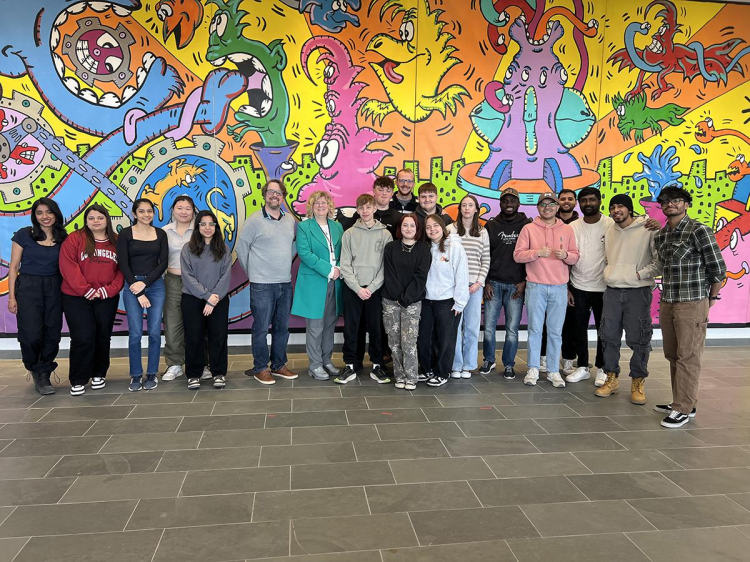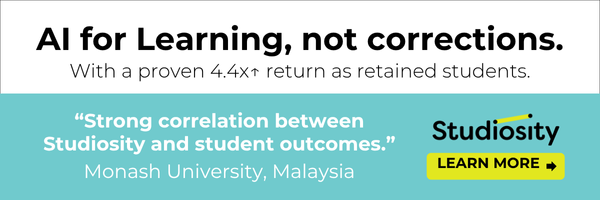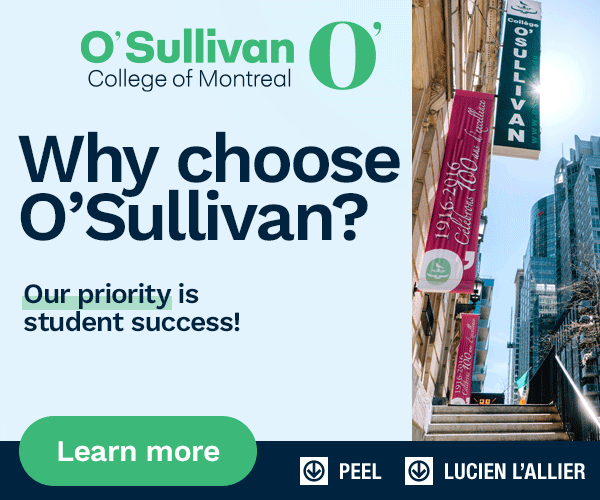How can technology be used to help aging populations including soothing the feelings of grief and loss caused by the death of a loved one?
That was the question some Humber Polytechnic students were tasked with exploring as part of a cross-discipline hackathon.
Students from the Interactive Media Management - Creative Technologies, Funeral Director, Personal Support Worker (PSW) and Nursing programs came together to explore how spatial technology (such as virtual and augmented reality) and AI can support aging populations. They were also joined by visiting students and faculty from Gower College Swansea from the United Kingdom.
Valuable cross-discipline learning
David Neumann, a professor with the Faculty of Media, Arts, and Design who organized the event, said the idea for the hackathon started more than a year ago when they were looking at how the Creative Technologies students could collaborate with other faculties. The hackathon was a unique chance to connect them with those in the health services field.
Himangi Aneja is a Interactive Media Management - Creative Technologies student who's thrilled with her program.
"I'm staying on top of all the new technology that's evolving daily," said Aneja. "I'm loving the program and what I'm learning."
Aneja took part in the hackathon and collaborated with students from the Funeral Director and PSW programs. This was invaluable for Aneja as she absorbed knowledge from her peers and what they had learned in the classroom.
"I'm not a health-care professional so the students from those programs helped me understand the emotional and psychological aspects of grief and the emphasis on healthy and structured healing processes," said Aneja.
A way to grieve differently
Their pitch was to use VR for grief support, and they called it Eternal Moments. She noted that traditional memorials and grief counseling methods might not be providing an immersive, personal connection that helps people process their emotions. They hoped to bridge that gap by offering VR-based memorials, recorded life stories and therapeutic experience that enable families to remember, reconnect and find comfort.

It could be used, for example, when a person passes away. A VR scan of a meaningful location, perhaps the kitchen if the loved one was passionate about cooking, is created. The family and funeral guests are given an opportunity to use a VR headset to virtually walk through the kitchen, experiencing it as the person once did. The immersive aspect allows for meaningful memory preservation and connection during the grieving process.
As Aneja notes, it's not an escape from reality but a way to grieve differently.
"The hackathon taught me how to use this technology to help people through their grief," she added.
Neumann was pleased that students from different programs were exposed to technologies they may not have been previously, which could lead to new learning opportunities and potentially new career paths. He said that by demystifying emerging technology, they hoped to reduce barriers for students who in the past have been hesitant to explore technology to spark curiosity, build confidence and expand agency.
The students were tasked with exploring three areas incorporating spatial technology: semi-mobile retirement living; dementia; and end-of-life. The students were assigned one of the three areas and then had to come up with pitches for industry partner Shalom Village.
Neumann envisioned the technology being used to transport a dementia patient to a moment in their past or to send someone with mobility issues to a part of the world they had never been. He knows of a Vancouver retirement home that brings in VR headsets for the seniors to interact with.
Perhaps grandpa can't visit anymore but he can do VR, said Neumann, who added the hackathon was a great way to introduce learners to the many possibilities through the technology.












